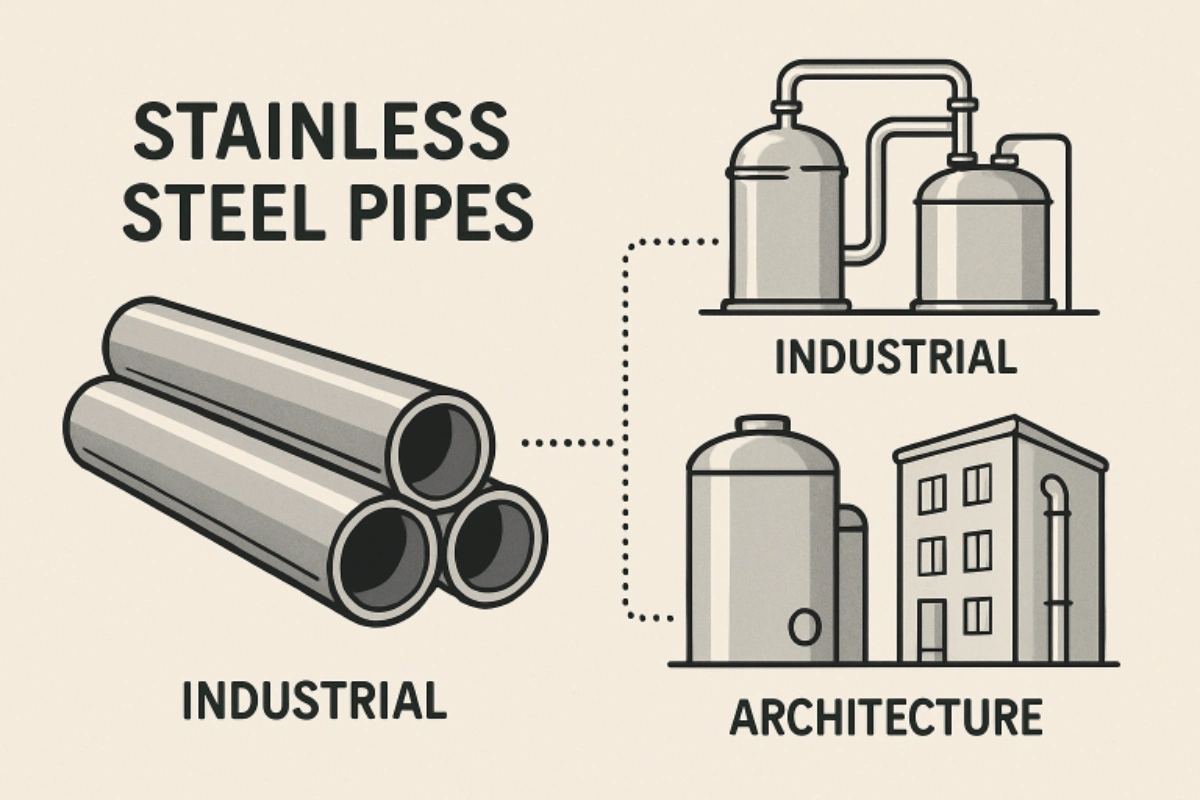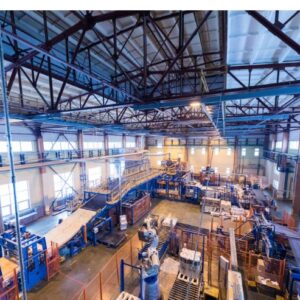Key Takeaways
- 316/316L stainless steel offers exceptional corrosion resistance and mechanical properties, making it ideal for demanding industrial applications.
- Its versatility spans across industries such as chemical processing, food and beverage, automotive, and architecture.
- Advancements in additive manufacturing have expanded the use of 316/316L stainless steel, enabling complex designs and efficient production.
- Ongoing research and development continue to enhance the properties and applications of 316/316L stainless steel.
Table of Contents
- Introduction
- Chemical Composition and Properties
- Applications in Chemical and Petrochemical Industries
- Use in Food and Beverage Industry
- Automotive and Aerospace Applications
- Architectural and Design Uses
- Advancements in Additive Manufacturing
- Sustainability and Recycling
- Future Trends and Research
In today’s advanced manufacturing landscape, material selection directly impacts the durability and performance of end products. Among the many materials, T316L stainless steel stands out for its unparalleled corrosion resistance and robust mechanical characteristics. Manufacturers worldwide consistently rely on this steel grade when reliability, longevity, and resistance to harsh environments are non-negotiable requirements.
The continuous evolution of industrial technologies demands materials that can perform under tremendous stress and in corrosive environments. 316/316L stainless steel, recognized for its versatility and safety, supports innovation in sectors ranging from heavy industry to high-end architecture. Its well-rounded physical properties make it the foundation for safe and efficient operations in chemical plants, food production lines, and more.
Chemical Composition and Properties
316 and 316L stainless steels belong to the austenitic family of alloys, characterized by the addition of chromium, nickel, and molybdenum. The presence of molybdenum sets these grades apart, enhancing resistance to chlorides and other industrial solvents. The critical distinction lies in carbon content: 316L has significantly less carbon than 316, minimizing carbide precipitation during welding. This modification preserves corrosion resistance even after extensive fabrication or welding—key for parts that must be both strong and hygienic.
In practical terms, these composition tweaks translate to pronounced resistance against pitting, crevice corrosion, and most mineral acids. Furthermore, the steel maintains its strength and toughness across a variety of temperature ranges, including cryogenic conditions, expanding its usability in multiple environments.
Applications in Chemical and Petrochemical Industries
The chemical and petrochemical industries are particularly harsh on equipment, demanding materials that can handle acids, chlorides, and high temperatures. 316/316L stainless steel is the preferred choice for valves, pumps, tanks, and heat exchangers precisely because it resists aggressive corrosion and localized attacks that can lead to premature failure. By maintaining their integrity over long operational periods, these components reduce downtime and costly replacements.
Additionally, 316L’s low carbon content prevents intergranular corrosion, which can undermine welded joints in complex piping networks or vessels. This makes it ideal for applications where frequent or extensive welding is required, ensuring long-term safety and reliability.
Use in Food and Beverage Industry
In food and beverage manufacturing, regulatory standards require materials that will not react with food products or alter flavors. 316/316L stainless steel’s non-reactive, smooth surfaces make it the standard material for equipment like storage tanks, piping, mixers, and conveyors. Its easy-to-clean nature supports hygiene protocols and inhibits bacterial growth, playing a critical role in food safety and compliance.
The alloy’s capacity to resist organic and inorganic acids, coupled with its ability to endure steaming and sterilization cycles, ensures long service life for food contact surfaces. This ensures that not only is the finished product safe, but production runs remain efficient and free of unplanned interruptions.
Automotive and Aerospace Applications
As vehicles and aircraft become more advanced, the need for lightweight, high-performance, and corrosion-resistant materials intensifies. In automotive engineering, 316/316L stainless steel is used in critical exhaust system components, catalytic converters, and fasteners subject to road salts and moisture. The material’s high-temperature stability and longevity allow for reduced maintenance and increased part lifespan.
Aerospace systems, exposed to more extreme conditions, benefit from the mechanical stability, resistance to atmospheric corrosion, and strength-to-weight ratio of 316/316L alloys. Components such as fasteners, tubing, and small structural elements utilize these steels to deliver both performance and safety in demanding flight environments.
Architectural and Design Uses
Modern architecture often seeks materials that harmoniously blend beauty and resilience. 316/316L stainless steel meets both requirements, making it a popular choice for building facades, handrails, and public art installations. Its resistance to tarnishing and environmental factors ensures that outside elements like pollution or salty air do not compromise the intended aesthetic or structural soundness.
The ability to fabricate this alloy into intricate shapes and fine finishes enables unique, long-lasting architectural statements while minimizing maintenance. This contributes to the metal’s widespread appeal in both contemporary and traditional design contexts.
Advancements in Additive Manufacturing
The arrival of advanced manufacturing techniques—particularly metal 3D printing—has opened new possibilities for 316/316L stainless steel. Researchers have improved the quality of metal 3D printing by modifying 316L stainless steel powders, resulting in better-formed parts with fewer support structures and enhanced mechanical properties.
These technological advancements allow for efficient prototyping and production of highly complex, custom designs, which would be impossible or cost-prohibitive using traditional methods. Industries can now realize intricate components with optimized weight, geometry, and function, reducing waste and enabling innovative engineering solutions.
Sustainability and Recycling
Environmental responsibility is an increasingly critical consideration in materials selection. Nearly 90% of stainless steel is recycled globally after use, with 316/316L grades leading the way in eco-efficiency. The use of recycled steel drastically reduces the demand for virgin ore, lowers energy consumption during manufacturing, and helps producers meet sustainability targets.
By prioritizing recycling initiatives, manufacturers can capitalize on cost savings and meet environmental regulations, all while maintaining the high material integrity essential to industrial operations.
Future Trends and Research
Research and development in the field of stainless steels continues to push the boundaries of what is possible with 316/316L alloys. Scientists are working on new alloying techniques and surface treatments to further improve corrosion resistance, mechanical performance, and manufacturability. Additive manufacturing and digital design tools are fueling creative engineering approaches—enabling fast, customized solutions for increasingly complex industry needs.
With ongoing advancements and an ever-expanding range of applications, 316/316L stainless steel is poised to remain a key player in modern manufacturing. It will help industries meet the challenges of a rapidly evolving technological world while maintaining strict standards for safety, sustainability, and reliability.


